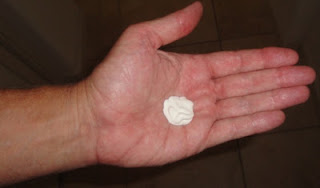Every
year we visit our dermatologist and wonder if something will have to be
cut off, frozen off, or sampled for cancer. Even though we pour on
high-SPF sunscreen every day, having fair skin in the tropical Hawaiian sun
increases our risk of getting skin cancer. This year, the Doctor told
some things about sunscreen and skin cancer that we did not know.
The
SPF (skin protection factor) number used for sunscreen is based on a
“fractional calculation” of the amount of sunlight being blocked which is 1 divided
by the SPF number. So, SPF 15 allows 1/ 15th of the sunlight
through which means it blocks about 93% of the sunlight. SPF 30 allows
1/30th of the sunlight through, which blocks 96% of the sunlight. We didn’t
realize that doubling the SPF number only meant that 3% more of the sunlight
was blocked.
The
SPF number on sunscreen is only related to blocking Ultra Violet B (UVB) rays
which cause sunburns. We use sunscreen and usually stay inside from
9AM-4PM in Hawaii when UVB is the strongest. Though that protects us from
sunburn, it turns out that UVB is not the primary cause of skin
cancer.
Ultra
Violet A (UVA) rays have been known to damage the skin, but it also responsible for giving you a great tan. Only
recently was it was discovered that UVA exposure is the primary cause of skin
cancer. This is a problem because UVA is the same strength all day, so
doing our walks later in the afternoon is not providing us any protection from
it. We assumed that the thick vog (volcanic emissions) in Kona was
filtering out all the UV rays, but UVA goes right through clouds and vog.
We are even exposed behind a glass window inside our house or car.
Researchers believe that this is one of the reasons workers in offices with
large windows have increased rates of skin cancer.
The
FDA has not approved a SPF-like rating for UVA, so using sunscreen does not
necessarily provide any protection. There are some ingredients that are thought
to help block UVA such as oxybenzone, titanium
dioxide, and zinc oxide, however it is not known how much protection they
really offer.
We
like spending time on the beach and soaking up the Hawaiian sunlight, so
keeping track of how much time we are outside as well as wearing hats and
covering up is our best protection. Meanwhile, we hope that more is learned
about the risks and benefits of UVA.

1 comment:
Sun protection is nothing to take lightly. It's better safe than sorry. I also burn way too easily so I try to remember to put on sunblock before I go out. I know of some great dermatologists as well that give great suggestions.
Post a Comment